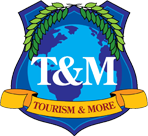Dealing with the Senior Market
September 2007
With the first wave of baby boomers approaching retirement age in the near future, the senior market will continue to be one of the fastest growing areas of tourism. From a tourism perspective this market is really three markets, what we may call the “young seniors,” the “middle seniors,” and the “older seniors”. Young seniors are people born between the years 1946-1960. Although many of these people are not yet retired, most will soon be. Many of these people have now paid off their mortgage and see their children as self-sufficient. Because they now have added expendable income, less home responsibilities, and relatively good health, they are prime candidates to travel. The middle senior market is generally considered people who were born between the years 1930-1946. These are the pre baby-boomers. Most of these people are now retired, tend to spend a greater amount of time visiting family and friends, have slightly higher medical costs, but still desire to travel. This group especially cares about being protected and desires visible security and safety measures. The old seniors are those people born before 1930. Many of these people are less likely to travel, and when they do travel often seek both security and personalized service. Despite the fact that this group has three sub-groupings they share enough common characteristics to be seen as a single cohort. Although much of this month’s Tourism Tidbits uses US data, the general trends toward increased senior travel and a strong senior markets hold true for most developed and many developing nations.
Here are some valuable pieces of data regarding the senior markets. As it is in much of the developed world, the “young senior market” is the largest and wealthiest niche market is the USA. It is estimated that it comprises some 78 million people and over the next 9 years it will have a per year 3.5% increase of over 60 year old travelers. These people also are expected to inherit a great deal of money. In 1990 it is estimated that they received over US $11 billion dollars while by the year 2015 they will have inherited approximately US$340 billion dollars. While these figures refer to the United States the economic picture is approximately the same (adjusting to size of country) for the other developed nations and many of the developing nations. Tourism officials would also do well to remember that senior citizens now live longer than did their parents, tend to be more active and travel more. By 2015 they will control a large percentage of the world’s assets and will have a tendency to both spend more and to demand more.
This month’s Tourism Tidbits then offers several ideas and suggestions on how to deal with the senior market and prepare its economic impact on both travel and tourism.
- Seniors are not only the developed world’s wealthiest group they are also its most demanding. The parents of today’s upcoming senior citizens tended to spoil them as children. This means that senior citizens are not afraid to demand what they want and complain until they get it. Especially the younger seniors come out of an age of political activism. Those organizations, businesses and institutions that provide good customer service have a great opportunity to thrive. Those that do not; may face economic destruction and multiple lawsuits. This principle is true not only for businesses but also for governmental agencies.
- Tourism Surety is important to senior travelers. As we age we tend to become more psycocentric in our travel habits and demands. Especially in an age of terrorism and in places of high crime, seniors will demand good security. Those cities that have developed TOPs (tourism oriented policing/protection services) units will have an added marketing advantage. Those cities that have not established such units may find that both their citizens and business people may ask some very hard questions as these locales begin to lose travel and tourism market share.
- Seniors tend to show higher levels of frustration. This frustration manifests itself in lack of patience, refusal to read small print, and almost zero tolerance for poor service. Tourism locales that wish to capture the senior market need to review not only their physical structures (are they accessible to everyone?) but also the size of print that they use in information brochures and signage and the level of customer service and visitor protection offered.
- Seniors are manifesting tendencies to move toward quieter and less congested areas. This migration toward “livable outer fringes” means that tourism facilities can no longer be centered just in the principle cities. Smart tourism bureaus will know how to take advantage of a dispersed tourism market and attract people who now shun the inner cities due to perceived high crime rates, poor customer service, and difficult parking conditions.
- Smart tourism bureaus and businesses know that this is the time to develop a senior task force. This tourism senior task force should keep abreast of the newest travel trends and demographic changes. For example, many tourism professionals are under the mistaken notion that the trend from the cold states to the warmer states will continue well into the future. Recent data however suggests that there is now a reverse flow as the aging seniors seek to be closer to children, family and friends. This reverse migration now means that those tourism entities located in colder climates will have many new business opportunities. Your senior tourism taskforce then should be composed of a wide ranging of specialists, from a marketing expert, to a tourism security expert, from a health expert to food safety and food diet experts, from a transportation specialist to a representative of the hotel and restaurant industries.
- The lack of good airline service will become a major difficulty for the senior tourism industry. Many airlines have switched to smaller and less comfortable aircraft. The trend toward regional jet commuter planes, along with increased security hassles at airports, has made travel especially hard on senior travelers. Many of these potential travelers are now shying away from air travel and long range travel and instead seeking travel opportunities closer to home. Regional marketing and the use of city personnel as marketing agents may pay off in increased tax revenue and new business opportunities.



